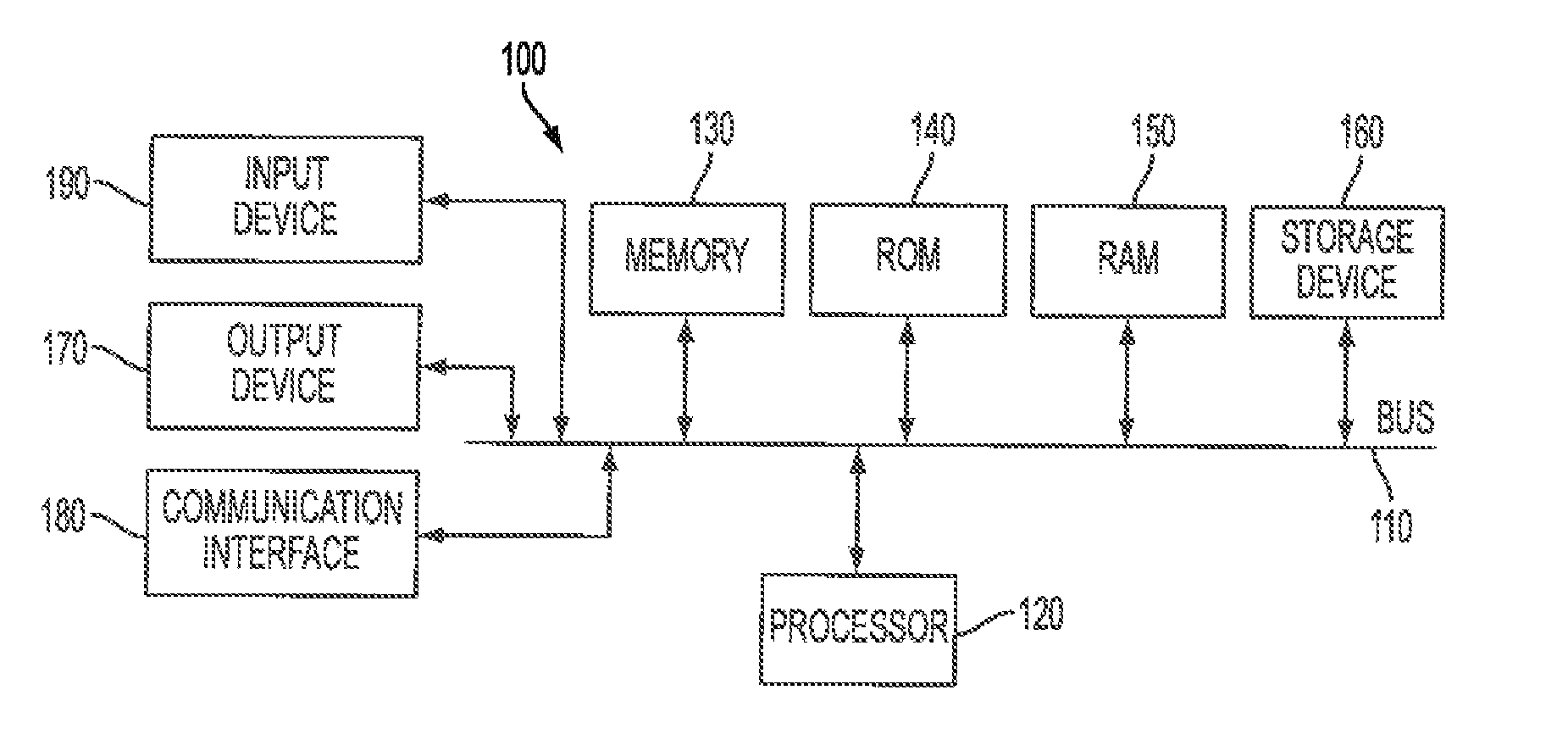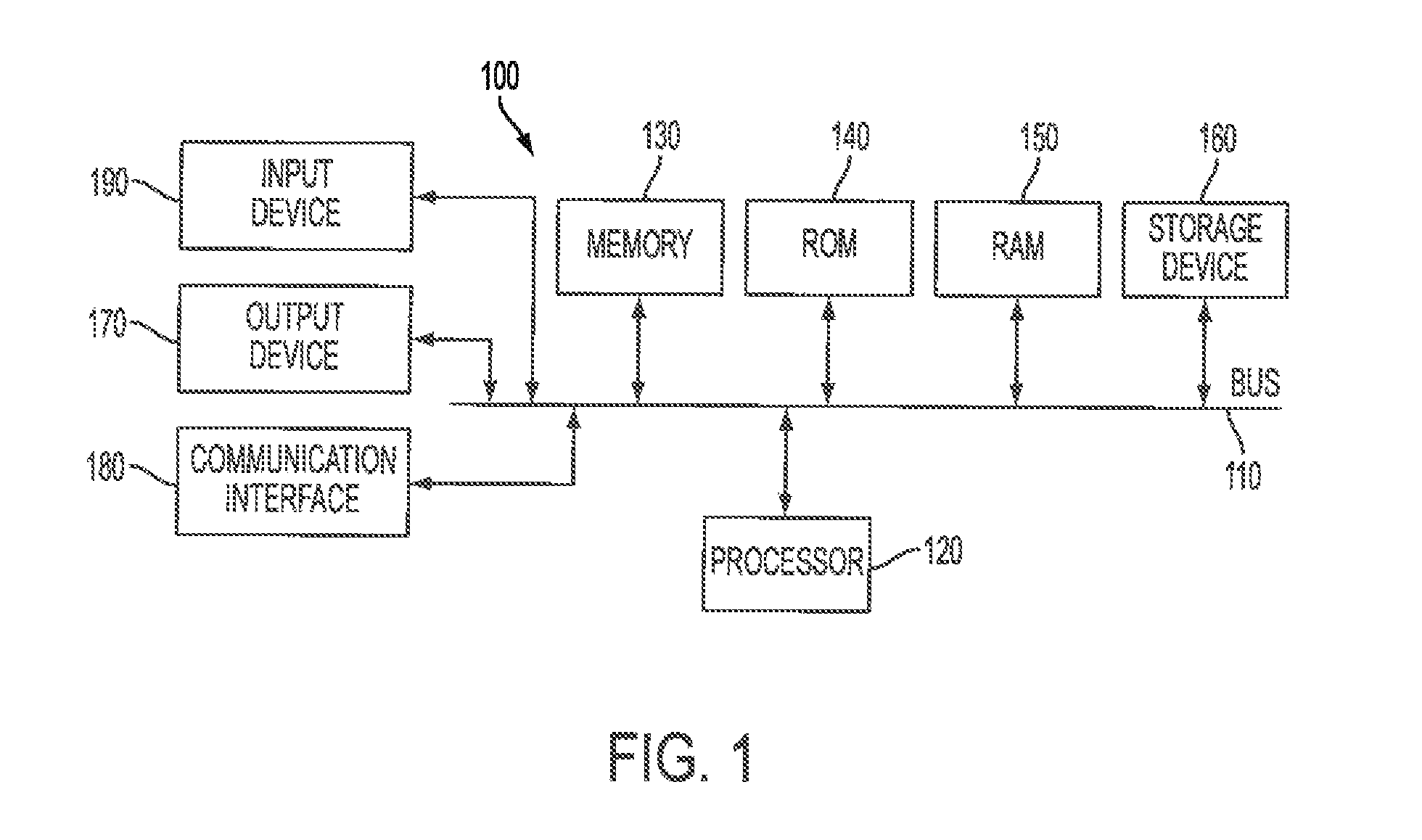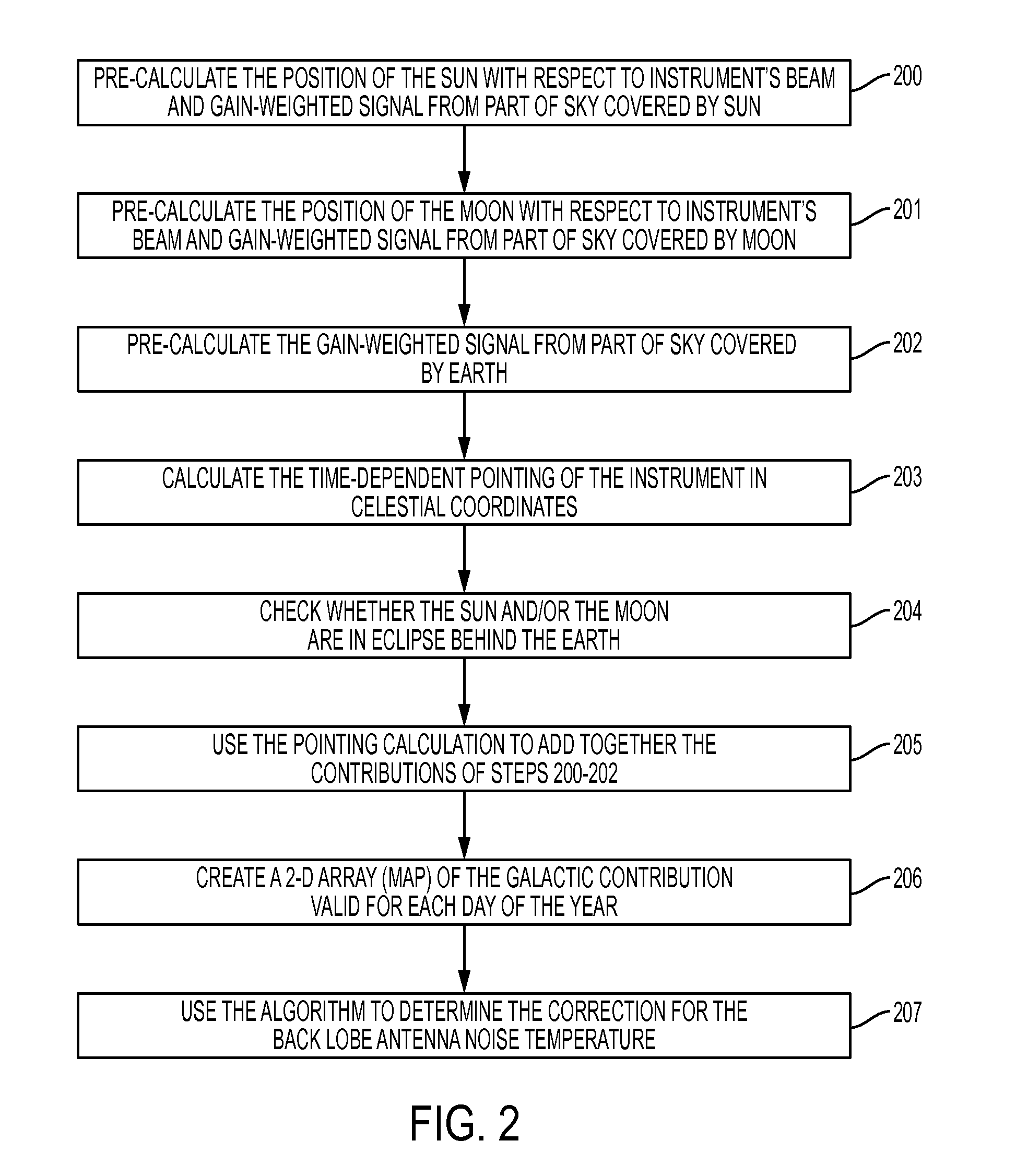Method and apparatus of back lobe correction to antenna temperature for earth-observing microwave instruments
a microwave instrument and antenna temperature technology, applied in error detection/correction, instruments, computing, etc., can solve the problems of electromagnetic radiation detection, diffraction limitation, and relatively poor resistance to radiation from celestial bodies, so as to reduce the uncertainty of galactic correction
- Summary
- Abstract
- Description
- Claims
- Application Information
AI Technical Summary
Benefits of technology
Problems solved by technology
Method used
Image
Examples
Embodiment Construction
[0038]With reference to FIG. 1, an exemplary system includes a general-purpose computing device 100, including a processing unit (CPU) 120 and a system bus 110 that couples various system components including the system memory, such as read-only memory (ROM) 140 and random access memory (RAM) 150 to the processing unit 120. Other system memory 130 may be available for use as well. It can be appreciated that the invention may operate on a computing device with more than one CPU 120 or on a group or cluster of computing devices networked together to provide greater processing capability. A processing unit 120 can include a general purpose CPU controlled by software as well as a special-purpose processor. An Intel® Xeon LV L7345 processor is an example of a general purpose CPU which is controlled by software. Particular functionality may also be built into the design of a separate computer chip. An STMicroelectronics STA013 processor is an example of a special-purpose processor which d...
PUM
 Login to View More
Login to View More Abstract
Description
Claims
Application Information
 Login to View More
Login to View More - R&D
- Intellectual Property
- Life Sciences
- Materials
- Tech Scout
- Unparalleled Data Quality
- Higher Quality Content
- 60% Fewer Hallucinations
Browse by: Latest US Patents, China's latest patents, Technical Efficacy Thesaurus, Application Domain, Technology Topic, Popular Technical Reports.
© 2025 PatSnap. All rights reserved.Legal|Privacy policy|Modern Slavery Act Transparency Statement|Sitemap|About US| Contact US: help@patsnap.com



